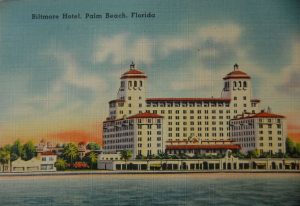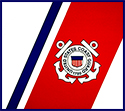
During World War II, when women stepped forward to serve, a new branch of the military was born, the SPAR.
The motto for the U.S. Coast Guard, Semper Paratus, is the Latin term for always ready. The ingenious Dorothy C. Stratton, who took leave from the faculty at Purdue University to first serve as a Lieutenant in the Navy’s WAVES, Women Accepted for Volunteer Emergency Service, was soon transferred to head the newly formed Coast Guard Women’s Reserve. Stratton, who would rise to become a Captain in the USCG, is credited for creating the acronym from Semper Paratus, Always Ready.
In sailing terms the spar is the pole of the rigging, possible wooden, metal or some other sturdy substance, which is used to SUPPORT the sail. Therefore, the SPARs were there to bolster the men of the USCG, by allowing them to travel with the navy to distant beaches and battles around the globe.
 Training for the women officers took place in various locations such as Smith College, in Massachusetts, then the USCG Academy at New London, Connecticut. In March of 1942 the CG decided it needed its own center for enlisted recruits and selected the Palm Beach Biltmore Hotel.
Training for the women officers took place in various locations such as Smith College, in Massachusetts, then the USCG Academy at New London, Connecticut. In March of 1942 the CG decided it needed its own center for enlisted recruits and selected the Palm Beach Biltmore Hotel.
One 97 year old SPARs I interviewed recently, Mrs. Cohen, told me, “The girls were dropping like peanuts all over the ground it was so hot in Florida. We were always marching.”
 In the book I mention, Three Years Behind the Mast, the authors, Mary Lyne and Kay Arthur, with riveting hilarity, recount the marching and fire drills in the snow, in the rain, at all hours, at times with face cream still smeared on their skin, and the hazards of doing their calisthenics in the sticky sand.
In the book I mention, Three Years Behind the Mast, the authors, Mary Lyne and Kay Arthur, with riveting hilarity, recount the marching and fire drills in the snow, in the rain, at all hours, at times with face cream still smeared on their skin, and the hazards of doing their calisthenics in the sticky sand.
In the long run, the SPARs reinforcements broadened, creating an invaluable contribution to the United States war efforts. They performed numerous duties including parachute riggers, motion picture sound technicians, air-sea rescue, clerical, switchboard operators, yeoman, air control operators, radiomen, radio technicians, link trainer instructors, pharmacist mates, bakers, motor vehicle drivers and a select few staffed the only all-women monitoring station at Chattham, Massachusetts. This was the highly protected site for the operation and maintenance of the top-secret Long Range Aid to Navigation, the LORAN, a radio navigation system developed for aircraft and ships at sea.
While it is reputed that, at that time, not all USCG men felt the SPARs were a necessity, the women, like their nautical namesake, withstood the storm and have sailed into history as an necessary support for our men and our country. This was due in part to the fact that the over 10,000 women who joined the SPARs during World War II were highly trained, they sought no favor or fanfare, and, of course, were Always Ready–face cream and all!
On July 25, 1947 the branch of the Women’s Reserve of the USCG, the SPARs, came to an end. Yet, those fearless women who stepped forward in a time of great need, should never fade from our memory.

